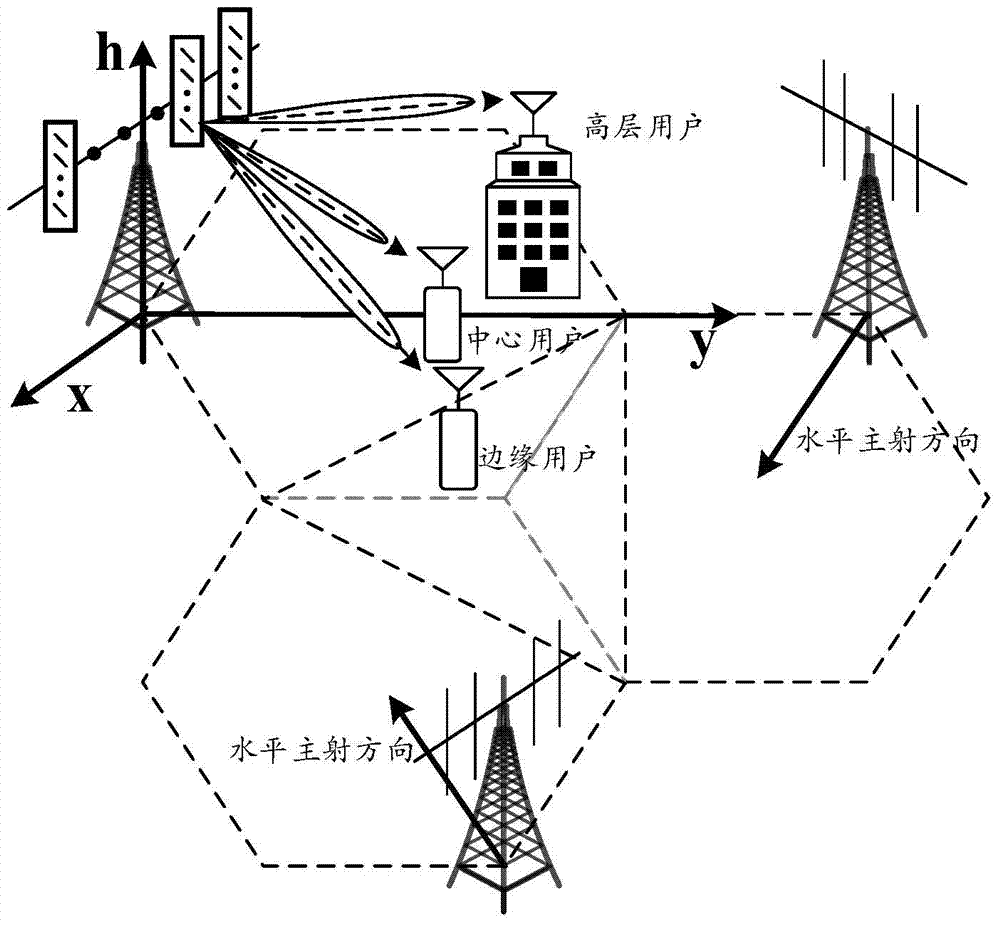Inter-cell interference coordination method adopting three-dimensional beam forming in 3D-MIMO (three dimensional multiple-input multiple-output) system
A 3D-MIMO and 1.3D-MIMO technology, applied in the field of multi-cell interference coordination, can solve the problem that the interference coordination strategy cannot be applied to the 3D-MIMO system
- Summary
- Abstract
- Description
- Claims
- Application Information
AI Technical Summary
Problems solved by technology
Method used
Image
Examples
Embodiment Construction
[0038] The present invention will be further described below in conjunction with the accompanying drawings and embodiments.
[0039] figure 1 Indicates the cell topology structure of the scene where the 3D-MIMO system is located, and the specific description is as follows:
[0040] In the traditional cellular hexagonal cell structure, the base station is located in the center of each hexagonal cell, and the hexagonal cell will be divided into three diamond-shaped sectors, and the three sectors are served by directional antennas at intervals of 120° . In the cell topology of the 3D-MIMO system, each cell is a hexagon, the base station is located on the common vertices of the three cells, and each group of directional antennas serves a hexagonal cell, such as figure 1 As shown, the direction of the arrow is the main radiation direction of the antenna. Since the cell topology differs greatly from the previous interference coordination scheme, a corresponding new interference c...
PUM
 Login to View More
Login to View More Abstract
Description
Claims
Application Information
 Login to View More
Login to View More - R&D
- Intellectual Property
- Life Sciences
- Materials
- Tech Scout
- Unparalleled Data Quality
- Higher Quality Content
- 60% Fewer Hallucinations
Browse by: Latest US Patents, China's latest patents, Technical Efficacy Thesaurus, Application Domain, Technology Topic, Popular Technical Reports.
© 2025 PatSnap. All rights reserved.Legal|Privacy policy|Modern Slavery Act Transparency Statement|Sitemap|About US| Contact US: help@patsnap.com



